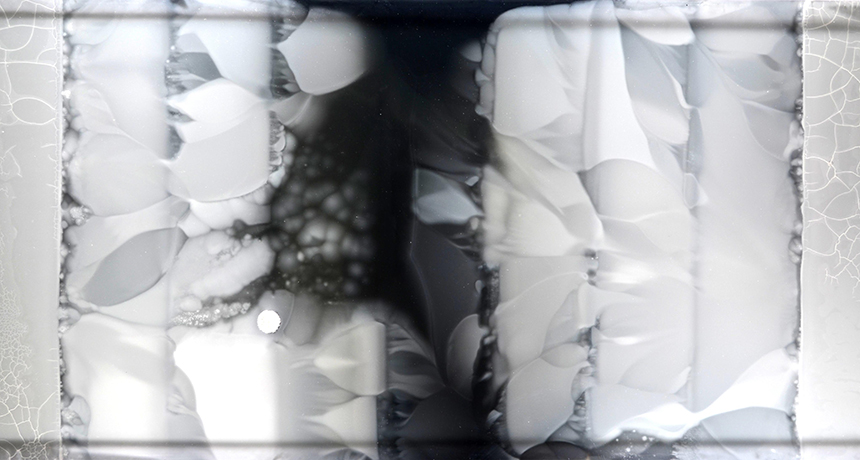Scientists watch as bacteria evolve antibiotic resistance

For bacteria, practice makes perfect: Adjusting to ever higher levels of antibiotics preps them to morph into super resistant strains, and scientists can now watch it happen. A new device — a huge petri dish coated with different concentrations of antibiotics — makes this normally hidden process visible, microbiologist Michael Baym and colleagues report in the Sept. 9 Science. The setup gives a step-by-step picture of how garden-variety microbes become antibiotic-resistant superbugs.
“As someone who’s studied evolutionary biology for a long time, I think it has a real wow factor,” says Sam Brown, a microbiologist at the Georgia Institute of Technology in Atlanta who wasn’t involved in the study. The bacteria are “climbing this impossible mountain of antibiotics.”
Scientists often study microbial evolution in flasks where everything is mixed together. “Inside that flask, in order for a new strain to evolve, the new mutant has to be more fit than everything around it,” says Baym, of Harvard Medical School. “But in nature, we see a second dynamic: You don’t necessarily need to be more fit than everything around you. You just need to make it into a new environment.”
Baym and colleagues modeled those spatial dynamics using a giant dish more than a meter long instead of a standard palm-sized petri dish. That gave the bacteria more room to diversify and also let the researchers create a gradient of antibiotics on the plate. Low concentrations of trimethoprim or ciprofloxacin antibiotics at the edges ramped up to much higher levels in the middle. Then, the team put Escherichia coli bacteria on each end of the plate and watched the microbes multiply over the next week and a half.
In general, as the E. coli mutated in ways that let them handle higher and higher levels of antibiotics, their descendants could press into new territory on the plate. The bacteria that made it to the middle could tolerate doses of antibiotics a thousand times higher than what was necessary to kill the original bacteria.
But antibiotic resistance didn’t always make bacteria competitive colonizers. Highly resistant bacteria sometimes spread more slowly. Trapped in the back by faster-moving bacteria at the forefront, the stragglers’ descendants formed pockets of super-resistance at lower antibiotic concentrations.
Baym and his colleagues think the experimental setup could be used to study microbial evolution under other environmental and spatial constraints, like the availability of particular nutrients.